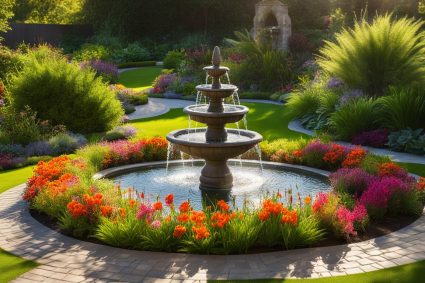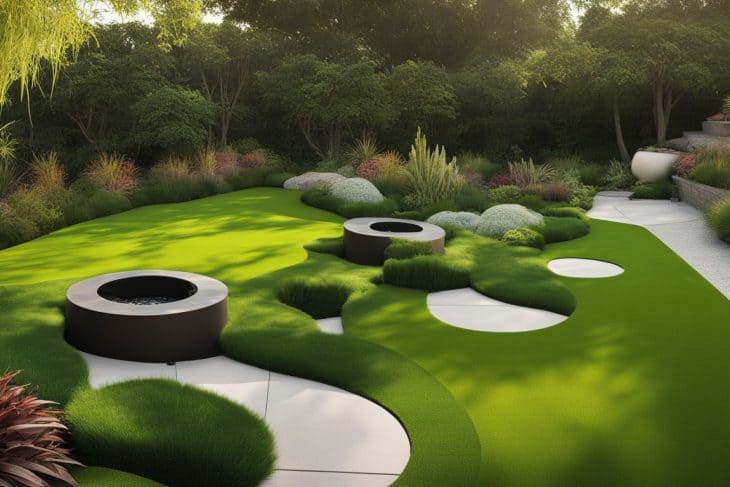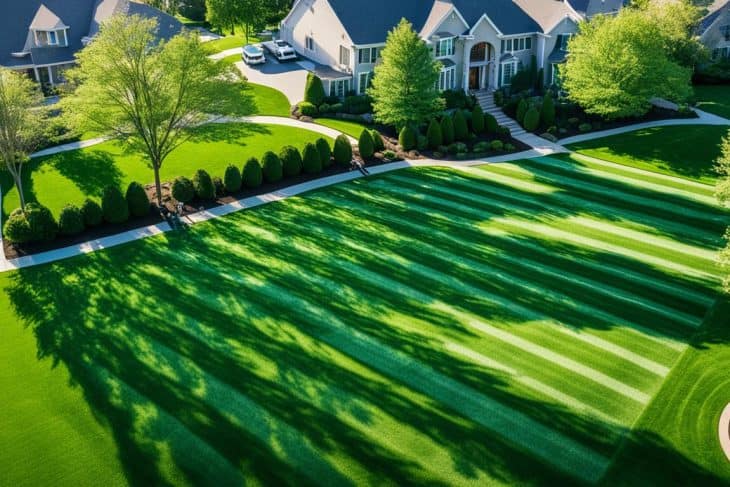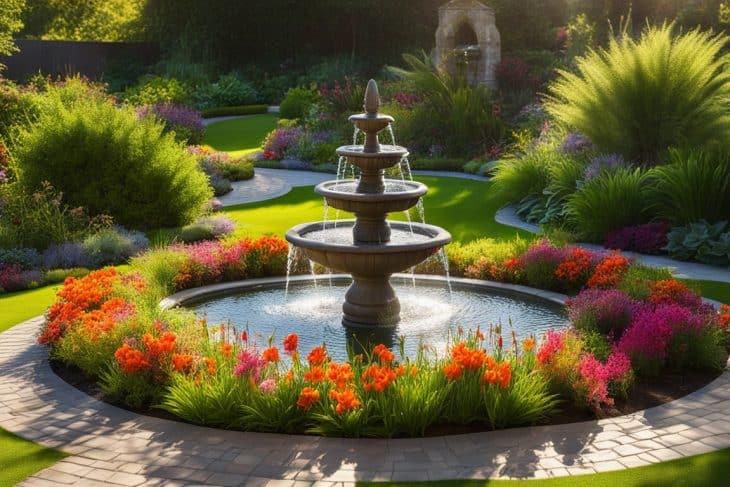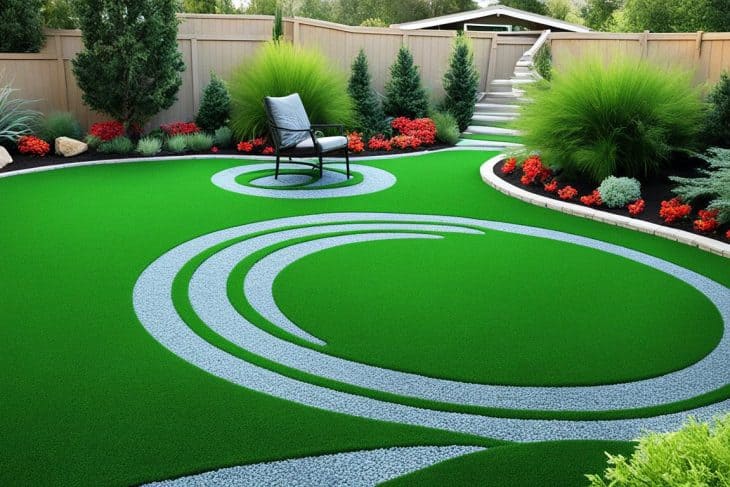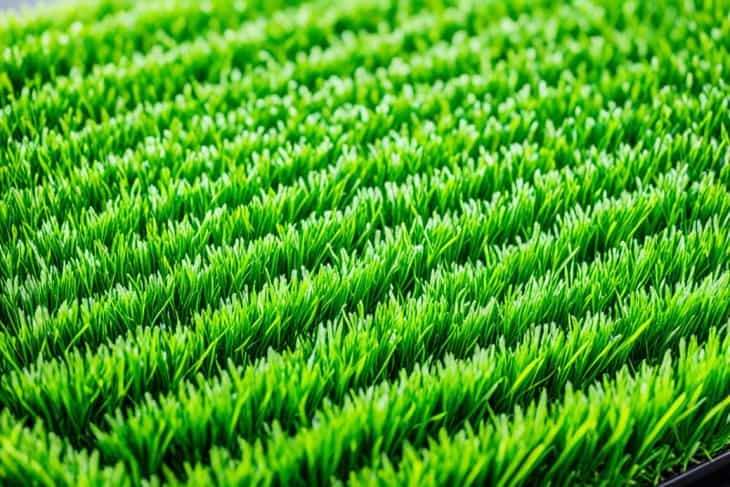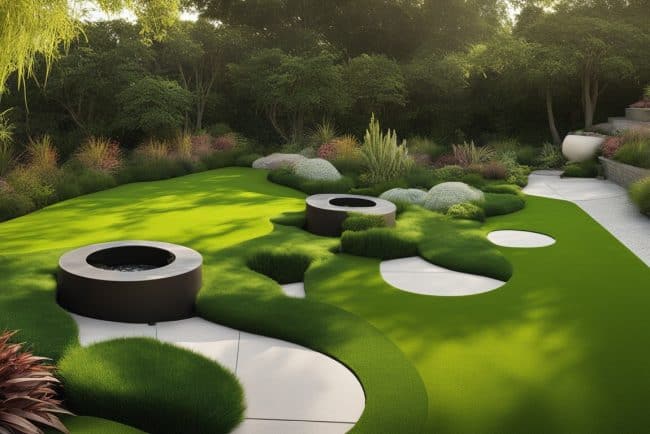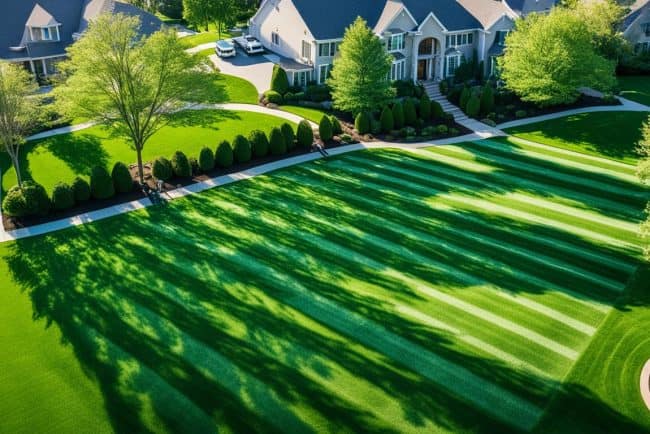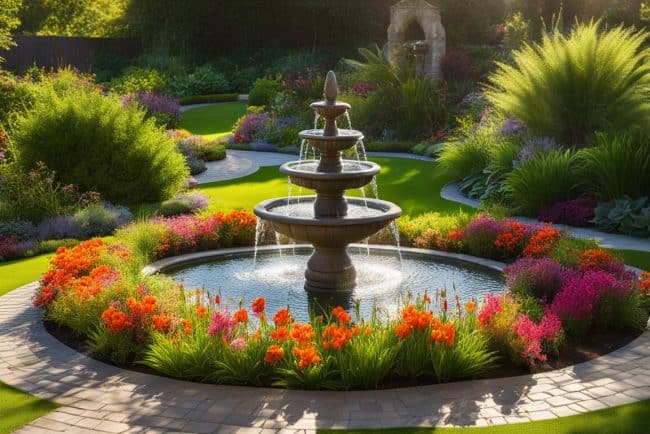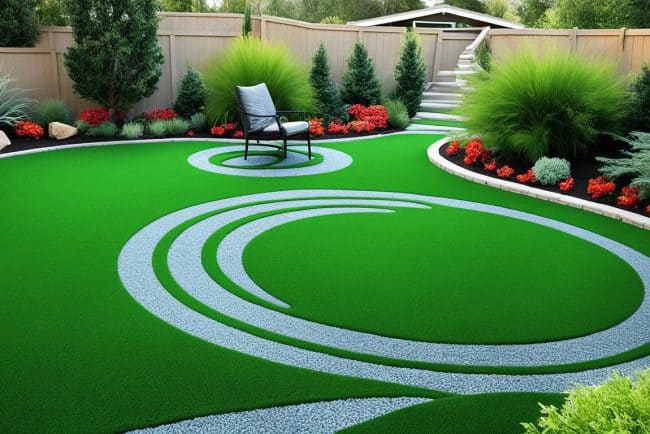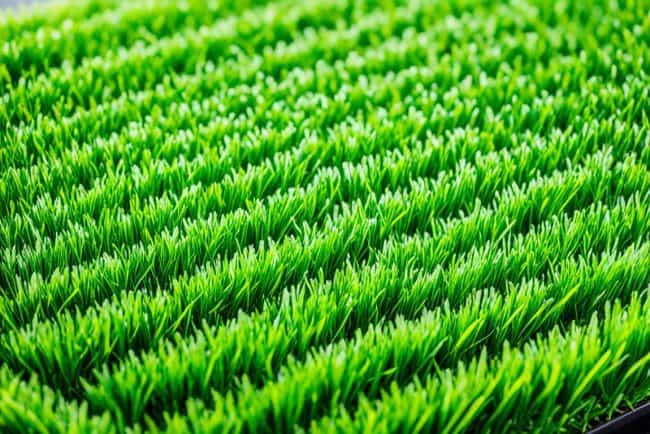
As a longtime homeowner, I recall when I thought about getting an artificial lawn. It was during a hot summer. My real grass was having a hard time with the heat and needed lots of water. The costs to keep my lawn green – water bills and time for mowing and fertilizing – were high. That’s when I began to look into artificial grass costs. I found a guide to make switching over easy and not break the bank.
I discovered many things affect the cost. These include the quality of materials and whether you hire pros for the job. I learned planning is not just about picking the turf. You have to think about extra materials, what people charge locally and how you’ll save money later on, like using less water. With the right info, I could invest smartly. This choice would make my yard look better and save me money over time. Let’s explore the key points of the financial guide for putting in artificial lawns. This will help you decide wisely for your home.
Understanding the Costs of Artificial Lawn Installation
When you think about putting in artificial grass, it’s key to know the costs. On average, putting it in costs between $15 and $19 for every square foot. This includes both materials and labor. For a lot of homeowners, this means spending around $7,400 to $9,350 for a decent quality turf over 500 square feet.
The type of material you pick affects the price of installing artificial lawn. You can choose from options like polypropylene, which costs $2 to $6 per square foot. Then there’s polyethylene and nylon, going up to $6.40 per square foot. Nylon turf, being of better quality, can make the cost go up by about 20%.
Where you live also plays a big part in the costs. In New York City, installation might cost $17 to $23 per square foot. But in places like Atlanta and Chicago, it’s a bit cheaper, ranging from $14 to $20. Remember, local factors like shipping fees and the competition for labor can change prices too.

Labor costs are going up because of more competition in the turf installation business. The charge for getting the materials delivered has also increased. It’s now an extra $50 to $100 for each delivery. Choosing a dependable company is vital to avoid any issues with getting your project done.
Understanding these factors helps you see the total money needed for putting in artificial lawn. It’s important to think about the material you want, how big the area is, and local price changes.
Factors Influiting Synthetic Grass Pricing
Several factors affecting synthetic grass pricing are key in setting the installation cost. Material choice is crucial, as different synthetic grass types like polypropylene, polyethylene, and nylon vary in price. This choice impacts the grass’s quality and longevity, with costs per square foot changing a lot.

In different regions, the pricing changes too. Places with higher demand or living costs may see higher prices. Labor costs, a big chunk of the budget, also differ by area. This changes the overall cost picture.
Adding special features can raise the price. Things like drainage systems or fitting odd yard shapes need extra work. Using skilled workers might cost more but it ensures the installation is done well. This helps the grass last longer.
- An overview of the main pricing elements includes:
- Quality of materials
- Labor costs based on skill level
- Type of infill materials chosen
- Installation complexity
- Regional market demand
Factors affecting synthetic grass pricing are crucial for planning your landscaping. Knowing these helps make a well-informed choice. It balances quality with cost.
Budget Planning for Your Artificial Lawn Project
Planning your budget for an artificial lawn is key. It helps you avoid surprises by knowing the costs upfront. First, figure out how much everything will cost. Then, see how prices might change based on where you live.
Calculating Your Total Installation Costs
To start, know how much your installation will cost. Find out how big your lawn will be in square feet. Then multiply that by the price per square foot. Remember, prices change based on the materials and the work needed. If your lawn is bigger than 5,000 square feet, check out ReTURF’s deals.
- Initial costs for artificial grass can be higher than real grass.
- Think about how much you’ll save later, like on water and cutting the grass.
- Don’t forget extra costs like getting the site ready, fixing water flow, and filling materials.
Assessing Costs by Region for Installation
Prices change depending on where you live. A regional cost check is important. Big cities often have higher costs for work and materials. For example, in New York and Boston, it might cost between $17 to $23 per square foot. But in places like Gilbert, AZ, it could be cheaper, at $12 to $15 per square foot. Knowing this helps plan your budget better.
By looking at your total costs and how prices change by area, you can keep your budget on track. This ensures your artificial lawn project is affordable and turns out just how you want it.
Different Types of Materials and Their Costs
Understanding the types of materials available for artificial grass is crucial for my project. Each material has its own durability, look, and upkeep needs. My choice affects how much I’ll spend and the value I’ll get from the installation.
Comparing Polypropylene, Polyethylene, and Nylon Costs
There are various types of artificial grass, mainly sorted by what they’re made of. Three main types are polypropylene, polyethylene, and nylon. Every type has unique material costs that will influence my decision.
- Polypropylene: This option costs between $2 and $6.35 per square foot. It’s less costly and good for light use.
- Polyethylene: Prices range from $2.20 to $4.10 per square foot. Known for its soft touch and looks.
- Nylon: Priced between $5 and $6.40 per square foot, nylon is best for busy areas due to its toughness.
Understanding the Impact of Material Quality on Pricing
The quality of the synthetic grass I choose affects costs and my happiness with it. High-quality synthetic grass usually has lower upkeep over time and looks great. Investing in quality is beneficial for durability, colorfastness, and realism. These factors matter a lot as they shape my long-term experience with the artificial lawn.

Professional Installation vs. DIY
Choosing between professional help and DIY projects is key. The idea of saving money with DIY is attractive. But, it’s wise to look at all factors to make a smart choice.
Weighing Labor Costs Against DIY Savings
Professional installers charge between $3.45 and $12 per square foot. This might seem high at first. However, their expertise and quick work often make up for the cost. Thinking about the hours and effort DIY takes, the savings can shrink. Especially when mistakes happen, costs can go up later.
Common Pitfalls in DIY Installation That Could Increase Costs
DIY might seem cheaper at first. Yet, mistakes like wrong base material or poor installation can add repair costs later. Each error increases the total cost, which might cancel out any initial savings. Knowing these risks shows the benefits of hiring professionals. Their knowledge and accuracy often save money in the end.
Evaluating Long-term Costs and Savings
Thinking about the long-term expenses of getting an artificial lawn is crucial. The upfront cost may seem high. But, the maintenance costs for artificial grass are much lower, making it cheaper over time. The yearly upkeep for fake grass is between $250 and $350. Meanwhile, a real lawn costs $1,500 to $6,000 yearly to maintain.
This big difference stands out, especially where saving water is important. With artificial grass, I save money over time and enjoy my lawn immediately. It’s important for anyone thinking about this to look at the long-term costs. Doing so shows that the savings can outweigh the initial investment.
Financial Guide: Making the Right Investment
Investing in an artificial lawn requires understanding its costs and long-term savings. It’s important to know how synthetic grass increases property value and reduces upkeep. Making choices based on material quality, how it’s put in place, and prices in your area makes a big difference over time.
Choosing artificial lawns means less money spent on upkeep than with real grass. I’ve learned that due to inflation, the value of money drops over time. So, investing in long-lasting artificial turf is like making your money grow for the future.
Diversifying isn’t just for finances—it’s for your garden too. Different synthetic materials offer different benefits. Looking into these can make the most of your money. In the end, making smart choices ensures my artificial lawn adds value and improves my life.
